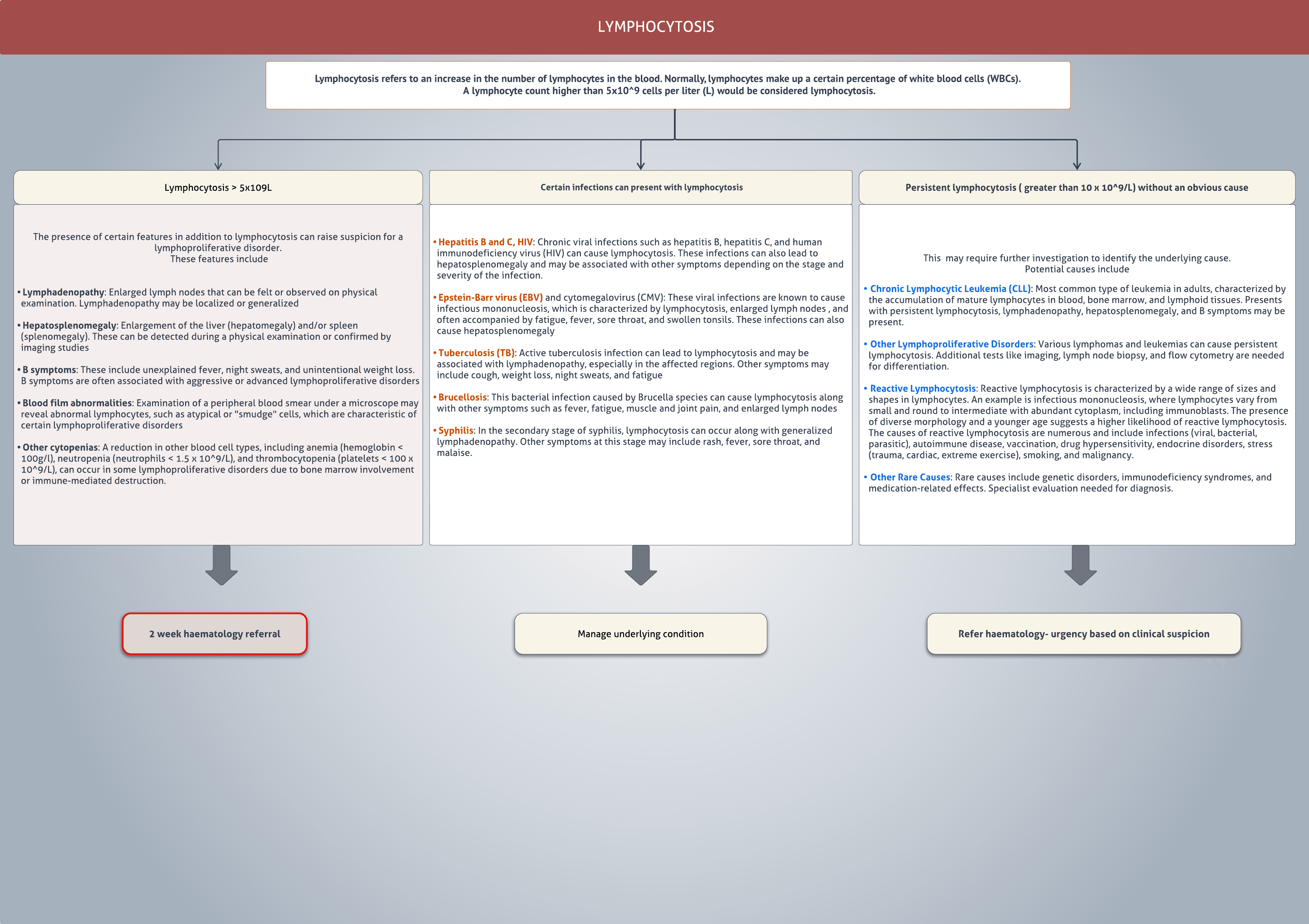Download A4Medicine Mobile App
Empower Your RCGP AKT Journey: Master the MCQs with Us!

Lymphocytosis refers to an increase in the number of lymphocytes in the blood. Normally, lymphocytes make up a certain percentage of white blood cells (WBCs). A lymphocyte count higher than 5x10^9 cells per liter (L) would be considered lymphocytosis.
The presence of certain features in addition to lymphocytosis can raise suspicion for a lymphoproliferative disorder. These features include:
Lymphadenopathy: Enlarged lymph nodes that can be felt or observed on physical examination. Lymphadenopathy may be localized or generalized.
Hepatosplenomegaly: Enlargement of the liver (hepatomegaly) and/or spleen (splenomegaly). These can be detected during a physical examination or confirmed by imaging studies.
B symptoms: These include unexplained fever, night sweats, and unintentional weight loss. B symptoms are often associated with aggressive or advanced lymphoproliferative disorders.
Blood film abnormalities: Examination of a peripheral blood smear under a microscope may reveal abnormal lymphocytes, such as atypical or "smudge" cells, which are characteristic of certain lymphoproliferative disorders.
Other cytopenias: A reduction in other blood cell types, including anemia (hemoglobin < 100g/l), neutropenia (neutrophils < 1.5 x 10^9/L), and thrombocytopenia (platelets < 100 x 10^9/L), can occur in some lymphoproliferative disorders due to bone marrow involvement or immune-mediated destruction.
Hepatitis B and C, HIV: Chronic viral infections...
Try our Free Plan to get the full article.